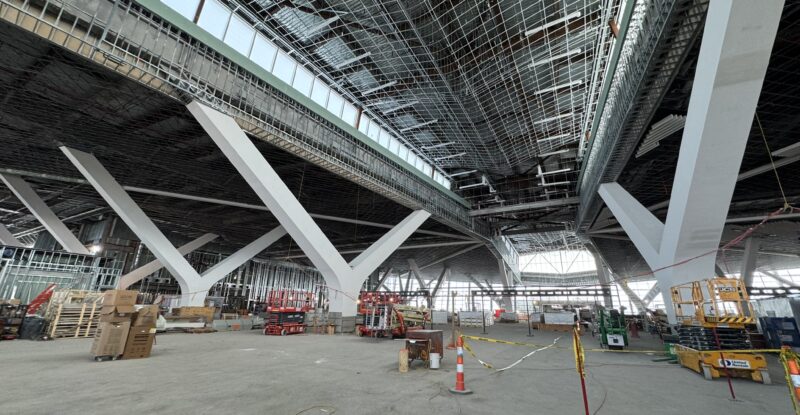NEW YORK — Newark Liberty and New York LaGuardia boast gleaming new terminals, and now serious attention is being paid to sprucing up New York’s other major airport, John F. Kennedy International (JFK), including with a New Terminal One facility.
The scale of the construction project — it spreads across sites now occupied by Terminal 1 and the former Terminals 2 and 3 — is massive, and when completely finished in 2030, New Terminal One will boast a hulking footprint of 2.6 million square feet with a total of 23 gates and more than 300,000 square feet of retail.
It will be JFK’s largest international terminal, nearly as large as both the new terminals at LaGuardia and Newark combined.
Phase A of the project is set to open in June 2026, including New Terminal One’s new headhouse and 14 widebody gates.
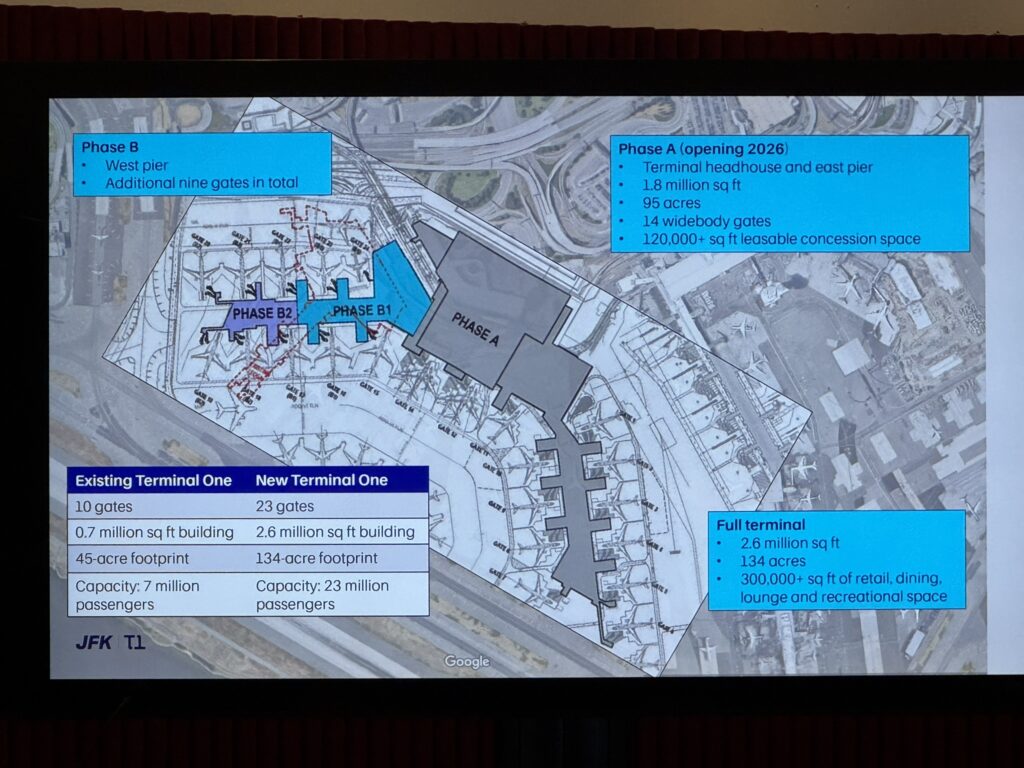
The Port Authority of New York and New Jersey and the New Terminal One consortium that was selected to design, build and operate the space are focused on making the passenger experience great for everyone, but are placing a particular emphasis on accessibility, Jennifer Aument, the CEO of New Terminal One said during a signing ceremony to welcome new tenant China Airlines.
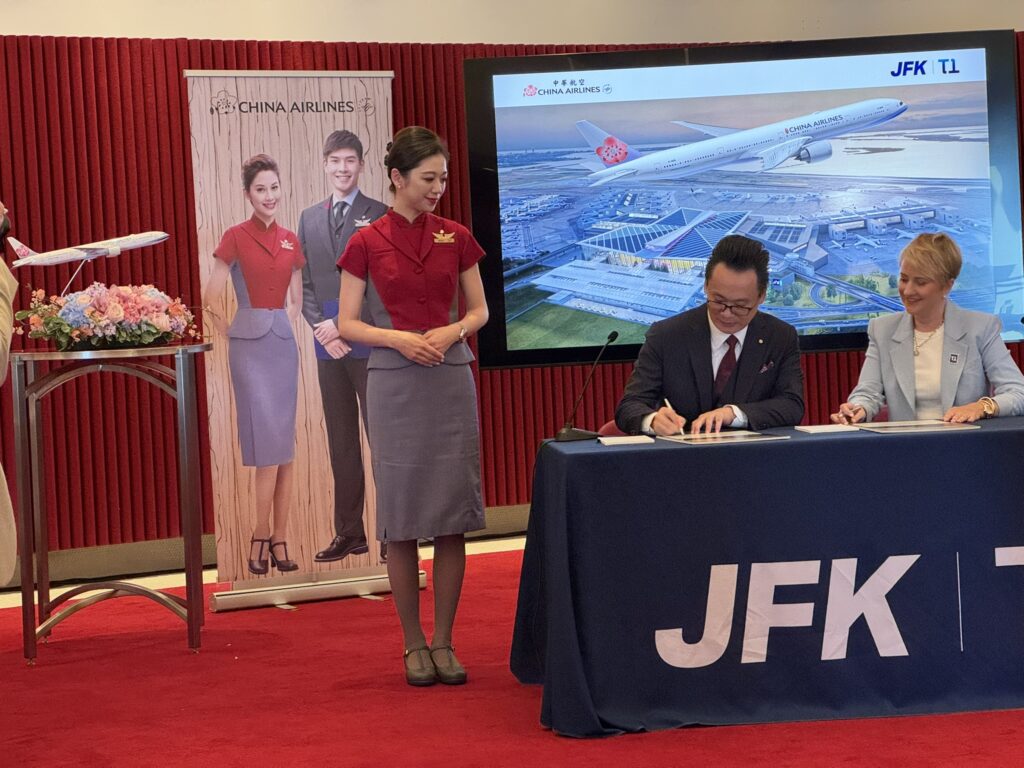
Biometric technology will be installed from curb to gate to streamline the flow of passengers; and separate and distinct flows will be available to passengers requiring special assistance, Aument said at the event, which was attended by Runway Girl Network.
Notably, digital signage will be dynamic and reactive to the flights operating at nearby gates, allowing for passengers to be guided in the native language of the airline at that gate.
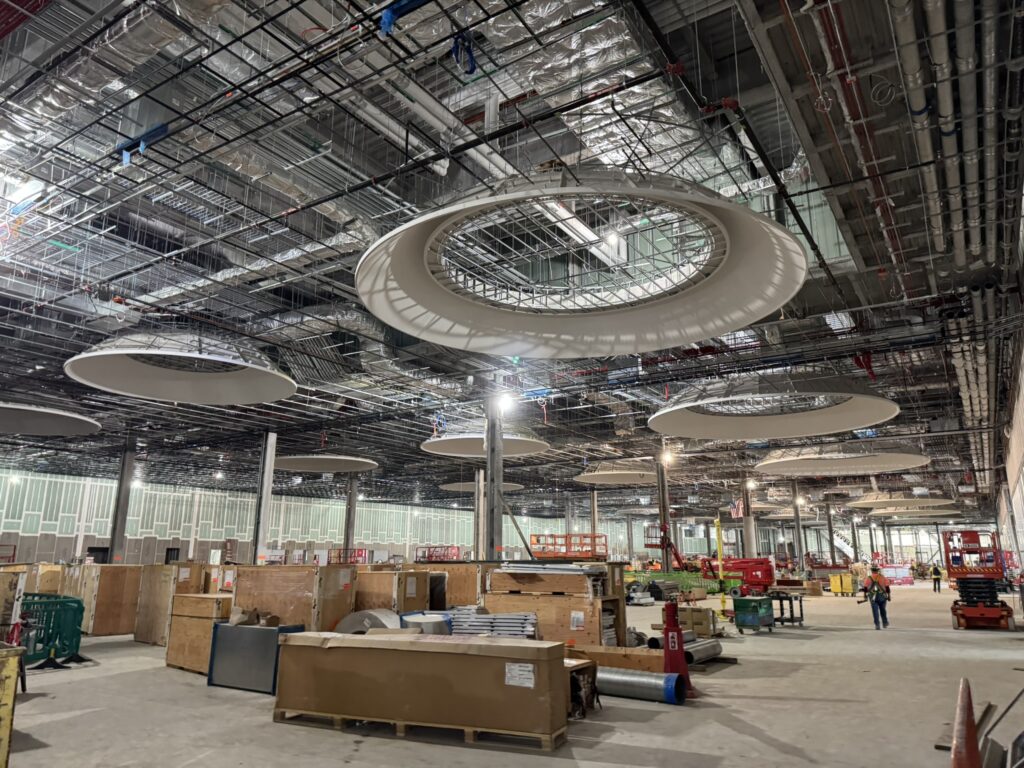 While many older terminals addressed passenger accessibility as an afterthought, New Terminal One at JFK has baked it into the design from day one. We’re told to expect three “best in class” lounges for Passengers Requiring Assistance (PRA), a sensory room for neurodivergent passengers and others with sensory sensitivities, and hoists that aid disabled passengers in using the bathroom.
While many older terminals addressed passenger accessibility as an afterthought, New Terminal One at JFK has baked it into the design from day one. We’re told to expect three “best in class” lounges for Passengers Requiring Assistance (PRA), a sensory room for neurodivergent passengers and others with sensory sensitivities, and hoists that aid disabled passengers in using the bathroom.
New Terminal One also has an opportunity to provide “a digital strategy for those customers to be able to participate in the great amenities of the terminal throughout our digital program,” Aument said. “I know many of us have people in our lives that have maybe stopped traveling and we want those customers to return to travel with a convenient option and that’s the care that we’re providing for customers requiring assistance.”
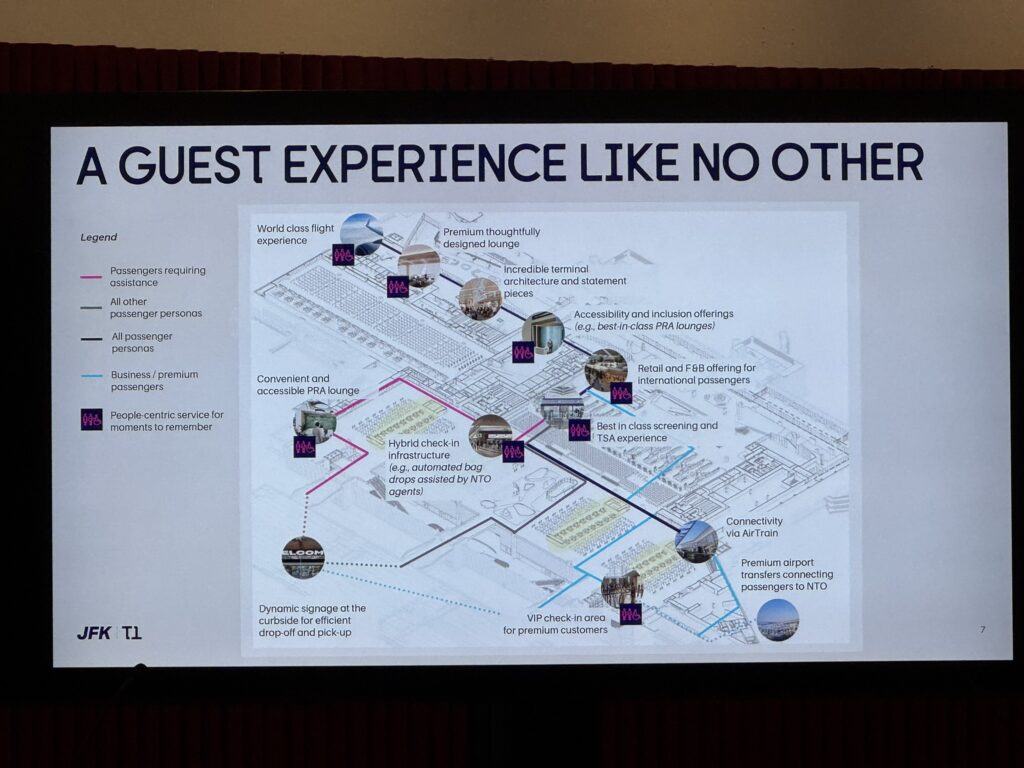
Accessibility and inclusion are central to the guest experience. Image: Jason Rabinowitz
In what could prove to be one of the last hard hat tours of New Terminal One before its Phase A opening, Aument showed off the expansive Customs and Border Protection (CBP) screening hall, which is located in a large, light-filled upper-level hall with many windows and skylights, a rare feature among US airports.
“When customers get off China Airlines,” the New Terminal One chief executive noted, “they will come into the terminal; they will go into the customs hall that’s flooded with natural light, that has world-class art, that’s going to be the full length of a US football field.”
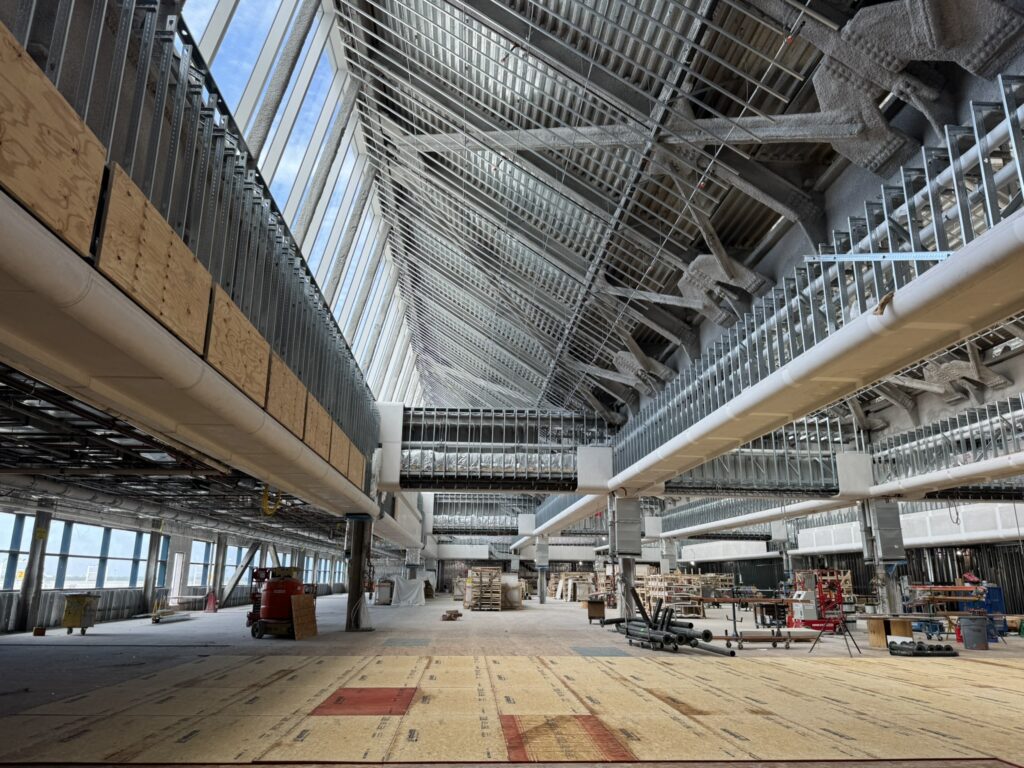
The New Terminal One is unique in that it’s tailored specifically for international customers.
“The real distinction of this terminal is that every element of design and operations has been developed specifically for customers like China Airlines. We want to set a new standard for both US-based airports and airports overseas as well,” Aument said.
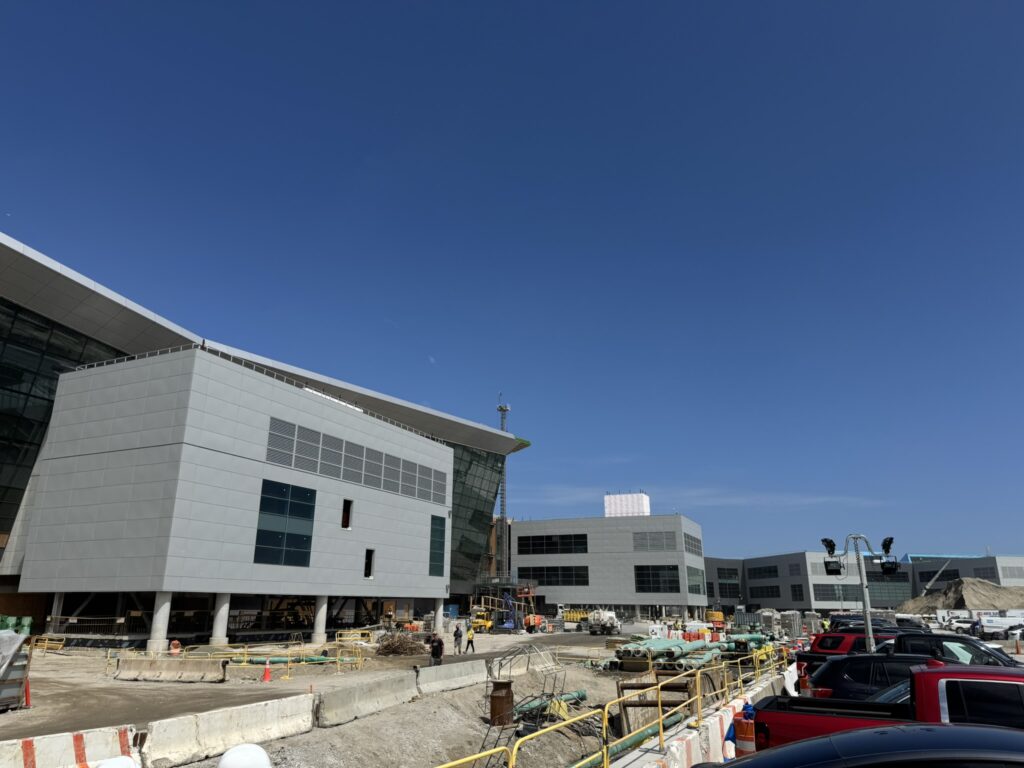 Indeed, no other terminal in the New York area will operate exclusively for international passengers, and this will allow New Terminal One to lean hard into enhancing and optimizing that experience.
Indeed, no other terminal in the New York area will operate exclusively for international passengers, and this will allow New Terminal One to lean hard into enhancing and optimizing that experience.
New Terminal One has even gone as far as to include workers from the CBP and the Transportation Security Administration in its own customer training and standards program to ensure that all interactions with employees working in the terminal will be with someone “who has bought into that customer vision.”
On the sustainability front, New Terminal One will be the first airport terminal in the world to procure a centralized fleet of all-electric ground service equipment.
Radiant floor heating will efficiently deliver comfortable temperatures throughout the terminal.
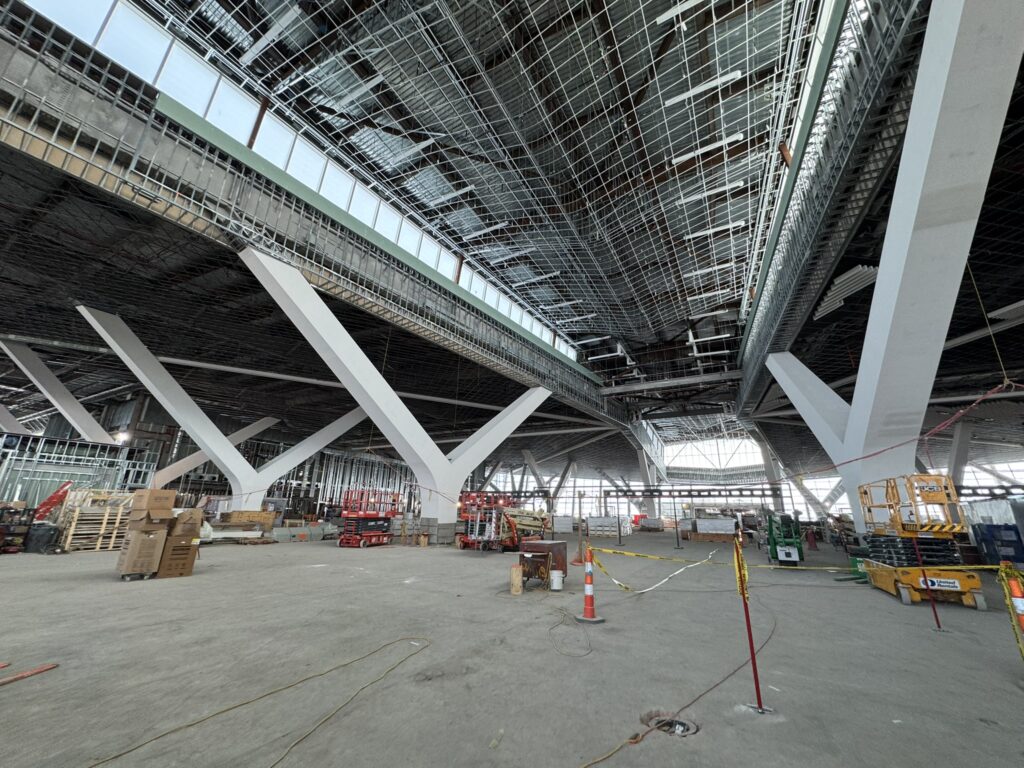
In addition to its LEED certification and a landscape irrigation system that uses rainwater capture, the terminal will house the largest rooftop solar array to be found in New York City or indeed on any airport terminal in the United States; it will be capable of providing up to half of New Terminal One’s power needs.
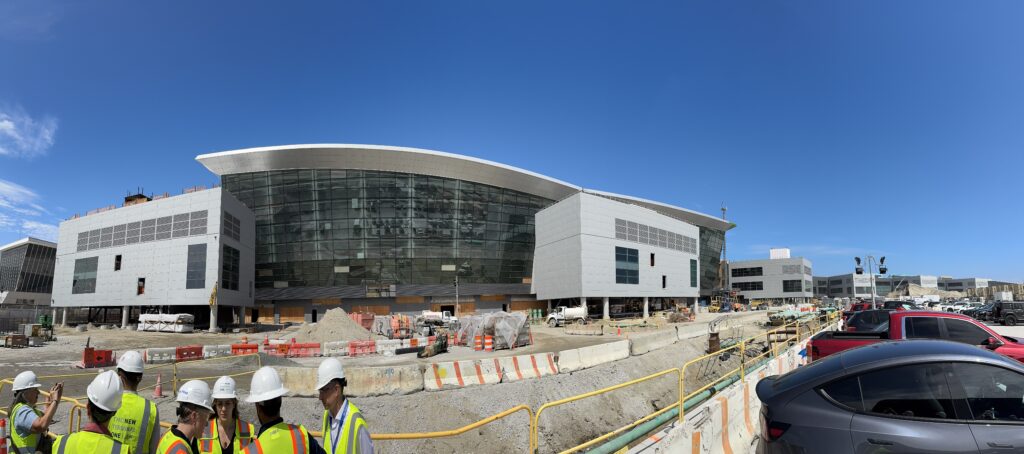 One missing feature that many frequent flyers and connecting passengers are quick to point out is the lack of an airside connection to Terminal 4 where Delta’s operation is located, whether by connecting bridge or even bus.
One missing feature that many frequent flyers and connecting passengers are quick to point out is the lack of an airside connection to Terminal 4 where Delta’s operation is located, whether by connecting bridge or even bus.
With many SkyTeam members moving into New Terminal One, such as Air France, KLM, Korean Air, and SAS, passengers connecting from a domestic Delta flight to an international flight out of New Terminal One will then need to travel landside between terminals and re-clear security.
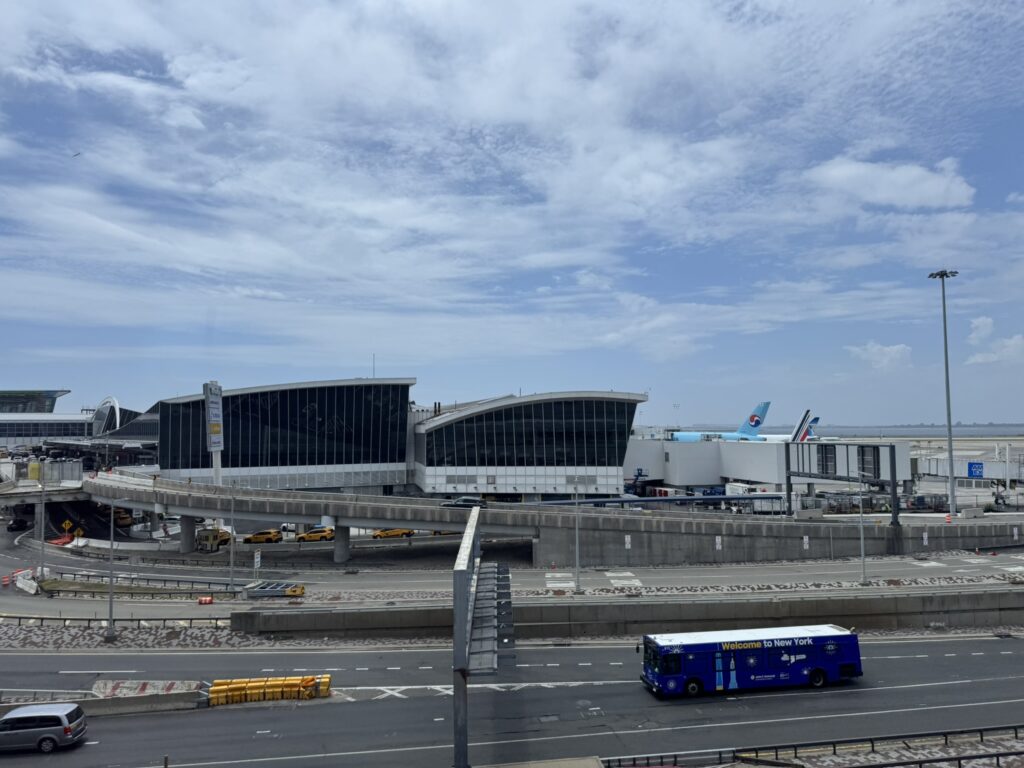 Related Articles:
Related Articles:
- Newark Liberty Terminal A provides glimpse of EWR’s future
- JFK joins growing list of airports turning to the sun to cut emissions
- LaGuardia Terminal B Headhouse surprises and delights
- Lufthansa lounge at Newark delights with seat choice, Allegris touches
- Zurich Airport and Pittsburgh International bolster solar initiatives
- Gatwick Airport’s accessibility promise paying off
- Airlines, airports seek to support the autistic passenger experience
- Press Release: JetBlue, Port Authority and Fraport USA to refresh JFK T5
- Press Release: New Terminal One at JFK issues facility maintenance RFP
All images credited to the author, Jason Rabinowitz




